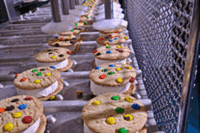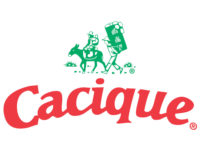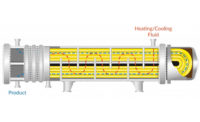Find the best pasteurizing process for your foods and beverages
Dairy Foods asked: What foods are best pasteurized by vat pasteurization? By high-temperature/short time (HT/ST)? By higher-heat/shorter time (HH/ST)? By ultra-high temperature (UHT)? Here’s what Bill Snow of SPX Flow Technology Systems had to say:
Vat pasteurization is typically used for low-volume production today. This may include goat milk or on-farm pasteurization where the volume does not justify the investment in capital equipment required for continuous pasteurization. The low temperature and time of vat pasteurization also produces a product with different flavor and organoleptic properties preferred by some customers. Products that require more residence time for flavor and/or body development (such as high-quality ice cream mixes) may still be processed in vat pasteurizers.
Standard fluid milk products and most ice cream mixes are typically processed in the HT/ST process. The process is designed to kill all pathogenic micro-organisms, but not to “sterilize” the product. The product must be held in refrigerated conditions after packaging, and the actual shelf life will depend on the quality of the milk before pasteurization and the conditions of handling after pasteurization. Products processed by HTST are generally intended for relatively local distribution and used by the consumer in seven to 10 days.
HH/STis a process used for extending shelf life of normal dairy products by heating to higher temperatures and shorter times. As a result, the remaining viable micro-organisms are reduced, resulting in longer shelf life under refrigerated conditions. The products may be packaged using standard liquid dairy fillers and packages, or ultra-clean fillers and packages to minimize post-pasteurization contamination. Coffee creams, whipping creams and other products that require long shelf life are typical products that may be processed on HHST as well.
UHTis a term used generally for aseptic products. Low-acid aseptic processing and packaging systems are regulated by FDA CFR 21 Part 113 rather than the Pasteurized Milk Ordinance. Any fluid milk or other dairy products can be UHT processed. The advantage of UHT is that the product processed and packaged in this manner does not need to be held in refrigerated conditions, and is “commercially sterile” under FDA regulations. The shelf life is often six months to 12 months or longer.






